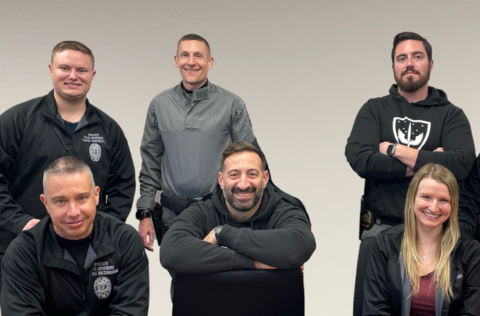Winchester's Original Crimestoppers - WPD's CID
Published on September 06, 2024

In recent years, the true crime genre has exploded in popularity—a Google search will take you to your pick of television shows and podcasts documenting the resolution of an (often salacious) crime. When watching these shows, you would be forgiven for assuming that investigating and solving a crime is a simple process. Something happens: police detectives sort through evidence that conveniently pops up here and there, and… voilà! The crime is solved. And usually just in time for the end of a 60-minute episode (with commercial breaks) or eight-episode podcast!
Real life, however, tends to be more complicated and less tidy. Crimes occur, and it takes a top-notch team of investigators, analysts, and forensic experts to determine what happened and who was responsible. Thankfully, we have that top-notch team in Winchester! Winchester Police Department’s Criminal Investigation Division, or “CID,” works day and night to respond to incidents when they occur, figure out what happened, and secure justice.
Comprised of one police lieutenant, one police sergeant, six detectives, and two crime analysts, CID is divided into two units: the “General Investigations Unit,” which investigates serious felony and misdemeanor crimes and conducts crime scene and forensic examinations, and the “Special Investigations Unit,” which gathers criminal intelligence and investigates narcotics, gang, fire, and explosives investigations.
According to Lieutenant Bielecki, the Division’s commander, CID “is relentless in its pursuit of justice… thorough investigations, internal cooperation, building partnerships within the community, and the use of advanced technologies” to resolve even the most complex cases. In the words of Lieutenant Bielecki, this commitment enables CID to “stay one step ahead of criminals while ensuring a safer Winchester for all.”
But how does CID achieve this lofty goal?
To start with, CID is staffed with many of Winchester’s top-performing officers. To be eligible for the Criminal Investigations Division, an officer must have two years of law enforcement experience. When there is an opening in the Division, interested officers submit a resume and letter explaining their interest in the position. Officers selected to move forward in the hiring process then participate in a panel interview with supervisors and detectives from the Division. During the interview, they answer tough questions related to policing challenges they have resolved, crime scene work, and their investigative experience. They also will often be required to submit a writing sample and produce a recommendation from their supervisor that cites how they operate under pressure. Ultimately, the panel grades the CID applicants highly qualified,” “qualified,” or “not qualified,” and the Police Department Command Staff will decide who will be selected.
To understand what happened at the scene of a crime and identify those responsible, Winchester CID detectives and analysts use a range of standard investigative techniques, such as interviewing suspected offenders and witnesses, victimology (the practice of understanding the victim and why a crime may have happened to them), and researching phone, financial, and legal records.
CID also uses many of the most cutting-edge police investigative techniques to solve crimes:
DNA Data Bank
CID staff can enter DNA profiles obtained from persons of interest into the Combined DNA Index System (CODIS) at federal and state levels to look for potential matches. The Virginia DNA Data Bank contains over 400,000 offender DNA profiles.
Forensic biology & DNA analysis
In addition to the DNA analysis mentioned above, the CID team examines evidence of biological material’s presence. After the proper samples for comparison purposes are obtained, DNA analysis can be conducted on stains, and conclusions can be drawn as to whether an individual can be eliminated or included as a possible contributor to the genetic material identified.
Latent Prints
CID develops and recovers latent prints from evidence items, compares them to known exemplars, and conducts database searches. Latent fingerprints or palm prints determined to be of sufficient quality are searched in the Virginia Automated Fingerprint Identification System (AFIS), administered by the Virginia State Police or the FBI Next Generation Identification (NGI).
Trace evidence
Trace evidence includes fire debris, explosives, paint, hairs, fibers, glass, primer residue (PR), fracture matches, and vehicle lamps. These types of items can link a suspect to a crime.
Finally, the CID team also works with federal law enforcement agencies, such as the FBI, and state agencies, such as the Virginia State Police, almost daily to track criminal trends and solve crimes. Much of this collaboration occurs through CID’s participation in task forces, such as the Northwest Regional Drug Task Force and Northwest Regional Gang Task Force.
By employing these tactics and maintaining the highest level of police investigative work, CID’s work is paying off and helping to keep us safer. For example, last summer, CID investigated a report of possible child pornography, resulting in the arrest of several alleged perpetrators on August 21. CID is currently investigating multiple cases ranging from auto theft to sexual assault to financial embezzlement.
As great as our CID team is, they still need your help! If you have any tips or information regarding a potential crime, you can help them take action while remaining anonymous by calling the Winchester-Frederick County Crime Solvers hotline at 540-665-TIPS (8477) or the Winchester Police Department non-emergency line at 540- 662-4131. If your information leads to an arrest and conviction, you may be eligible for a reward of up to $1,000.